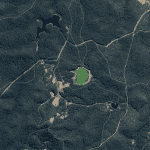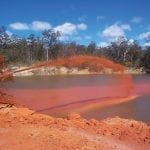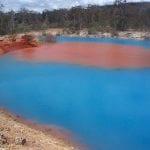The Mt Carrington mine site in northern NSW, Australia, carries a legacy of more than 150 years of gold and silver mining (some copper, zinc and antimony were also recovered), but the last commercial operations stopped in 1989. Mineralogical recovery of gold and silver employed the carbon-in-pulp cyanide extraction method. After extraction of gold and silver the tailings were discharged at a pH of > 9.0 to a 14 ha tailings dam.
Existing tailings dams, although harder to remediate, can also be effectively treated using ViroMine Technology and Reagents. Extensive laboratory, bench and field trials have demonstrated that utilising ViroMine Technologies in acidic, metal contaminated tailings offers an economically viable and environmentally sound alternative to capping and acid neutralisation using lime or magnesium. ViroMine Reagents can be applied to existing tailings as a slurry, or as pelletised or powdered reagents.
In a world first, Virotec undertook a trial to revegetate acidic tailings at Mt Carrington Mine. The trial mixed the layer of the reagent residue remaining after treating the water in the tailings dam with the tailings to allow the growth of pasture grass. Virotec’s reagents can be applied in powder, pellet or slurry form.
The trial mixed the thin layer of the reagent that remained after treatment of the tailings dam water and a small amount of soluble with NPK fertiliser with the tailings using a rotary hoe.
The results showed that the spent reagent had enough residual alkalinity to allow the growth of grass by neutralising acidity in the exposed tailings (Plate 2). The improvement in water quality also allowed the successional establishment of pioneer riparian wetland vegetation.
The tailings were also tested for pore water metal concentrations using the US EPA TCLP test. This data shows that the Virotec reagent successfully reduced pore water metal concentrations substantially after only 2 months and data from other work indicates that these results should improve further over time.
The use of ViroMine Technology has proven that tailings dam water can be treated in situ to a sufficient quality that it can be discharged to the environment and that exposed tailings can be treated simultaneously to allow sustainable habitat development with minimal on-going costs for managers or regulators.





